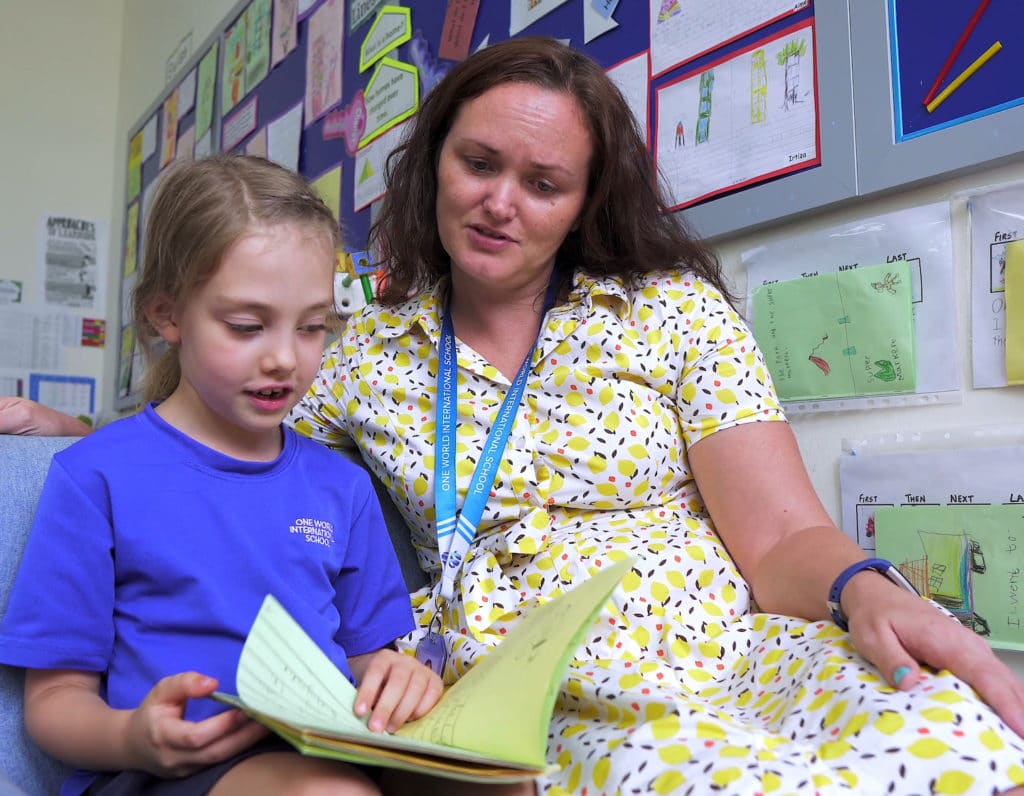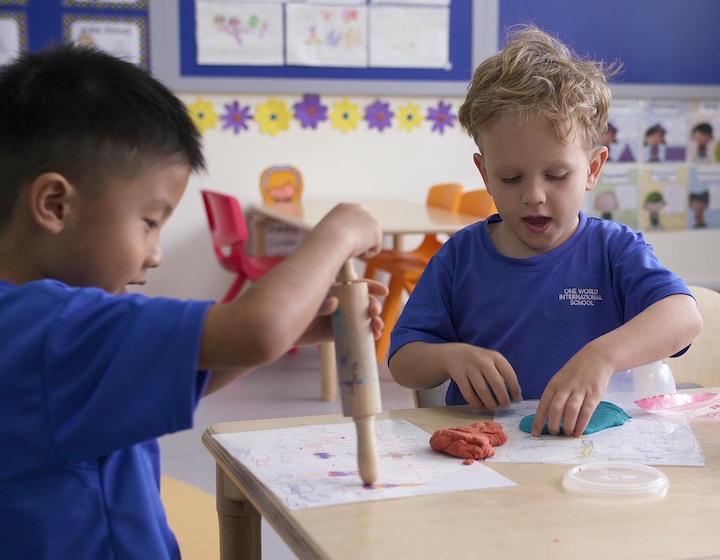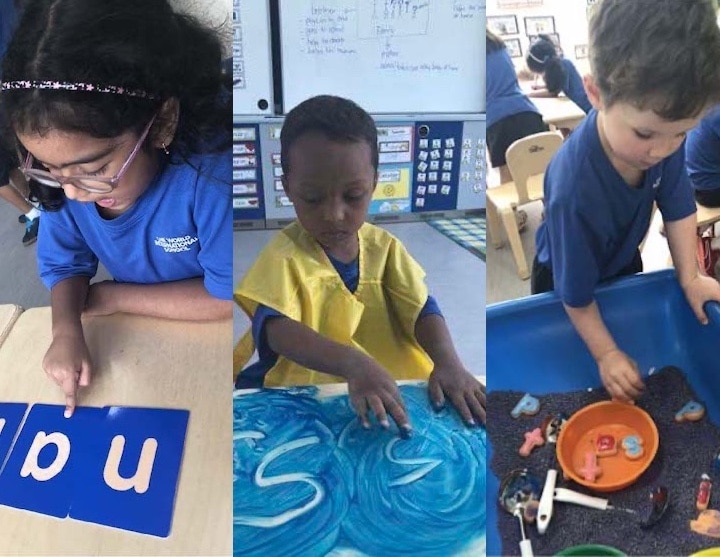
Wondering when is the right age for your child to learn to read? We lay out the benefits of the phonics approach for children as young as age 3
OWIS instructor Luna Deller
For many parents of young learners, reading is the most important element of their education. Children begin working on the building blocks of reading in early childhood, and phonics plays an integral role in their ability to read well when the time is right. OWIS has implemented a phased phonics approach into its early childhood and primary curriculum.
Why is Phonics Important?
Phonics instruction is one of the first steps toward teaching children how to read and write. Phonics introduces the concept that letters make different sounds and shows students that there is a relationship between the sounds that different letters make. Students who understand phonics are able to sound out their sounds while reading, and it helps them learn to read and write faster.
In fact, research supports the idea that young children grasp the art of reading with little effort when they are taught phonics consistently.

When Can Students be Introduced to Phonics?
Students can be introduced to phonics during the early childhood years. In fact, it is recommended that students begin learning about the concept of phonics between the ages of 3 and 5, as this allows them to begin developing their pre-reading skills. Phonics instruction should continue for a few more years, as students become stronger readers and writers who can take on more challenging texts. Phonics helps students feel confident in their ability to read, and allows them to continue growing as writers.
The Phases of Phonics Instruction
Generally speaking, there are six phases of phonics instruction. These include:
- Decoding
- Blending
- Decoding Consonant-Vowel-Consonant Words
- Decoding Consonant Clusters
- Vowel Digraphs
- Consonant Digraphs
Throughout these phases, students naturally develop encoding skills that help them to move from one stage of learning to the next. Phonics instruction helps students learn to read out loud, spell words on their own and begin writing their own sentences.

Tips for Parents to Use to Teach Phonics at Home
Parents will find that it’s easy to support phonics instruction at home. Here are a few activities that parents can do with their children to teach phonics concepts:
- Listening and Imitating Sounds — Parents can have their young children listen carefully to the sounds around them, such as birds chirping in the yard. When the child hears the sound, the parent should ask them to imitate it.
- Sensory Bin Writing — Parents can create sensory bins at home, that are filled with common household items such as sand, flour or rice. Children can practice tracing letters in the bin.
How OWIS Teaches Phonics
OWIS has a systematic, fun approach to teaching phonics and has incorporated the different phases of teaching phonics into individual grade levels. The breakdown is as follows:
- Sound discrimination, which is phase 1 at OWIS, is introduced in the first year of early childhood for students who are 3 turning 4.
- Phase 2 or word decoding is introduced in the second year of early childhood for students who are 4 turning 5. Children also start to try their hands at writing at this time.
- In the third year of early childhood, phase 2 activities are reviewed for students who are 5 turning 6. Decoding of consonant-vowel-consonant words is then introduced, with many phonics games.
- Decoding consonant clusters and vowel digraphs, which are phases 4 and 5 respectively, are introduced in Grade 1, along with spelling and writing high frequency words and sentences.
For more information about phonics instruction at OWIS and the important role that phonics plays in early childhood learning, contact them today and schedule a campus tour.
One World International School, 21 Jurong West Street 81, Singapore 649075, Tel: (+65) 6914 6700, [email protected], www.owis.org






 View All
View All





 View All
View All









 View All
View All




